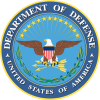Juana Díaz: Difference between revisions
Knorrepoes (talk | contribs) m (Text replacement - "{{media}}" to " {{us}} {{media1}} ") |
Knorrepoes (talk | contribs) m (Text replacement - "{{us}}↵↵'''" to "'''") Tags: Mobile edit Mobile web edit |
||
| Line 1: | Line 1: | ||
'''JUANA DIAZ''' | '''JUANA DIAZ''' | ||
Revision as of 05:59, 25 July 2023
JUANA DIAZ
Territory : Puerto Rico
Official blazon
Origin/meaning
The arms were officially adopted April 25, 1978 for the 180th anniversary of the founding of the town.
Most of the pictures in these 'arms' are related to the history or geography of the town :
The sun symbolises a new horizon, hope in the formation of a town. The sun in the coat of arms has thirteen rays, each representing a ward of Juana Diaz.
The thirteen knolls stand out in the coat of arms symbolising each of the thirteen wards or barrios of Juana Diaz. The mountains also symbolise that Juana Diaz has been one of the richest mineral towns in Puerto Rico. Juana Diaz produces high quality marble on a commercial scale.
The Nazarene Cross stands out subtly between furrows and space, symbolising the union of two races by means of the inalienable bond of the Christian faith. The cross also symbolises the western Christian culture.
The woman represents the name of the woman that gave foundations to the town - Mrs. Juana Diaz - with her hands the woman strews thirteen grains of corn into thirteen furrows, symbolising the seeds that germinated and were the base for the foundation and growth of our town. The woman dresses as those of her time.
The native element represents the native who settled the village before the arrival of the white man. The indian represents Cacique Jacaguax, (pronounced "kahseekeh"), the tribal chief in whose name we named our river. The native carries on his back thirteen sheathed arrows and a bow, and an arrow on his head. The bow and arrow represent the only effective means of defence useful for survival.
The harp represents the music, the quill pen dipped in the ink well represents the verse, the poetry. Juana Diaz has generously given distinguished poets to Puerto Rican literature. Among these are Luis Lloréns Torres, Tomas Carrion Maduro, Luis Felipe Dessus, Josefina Lloréns Torres, Mario Braschi, Cesareo Rosa Nieves, Arturo Gomez Costas and other contemporaries.
Juana Diaz is known in history as the martyr of 1887 because the most heinous, repressive institution known at the time was enforced in our town - "El Componte". It was in Juana Diaz where liberal politicians and dedicated patriots were martyred because they fought against the tyranny imposed by General Romualdo Palacios. Palacios was the most tyrannical and cruel of all the Spanish governors of our nation. "El Componte", a military tribunal, was used to quiet the rebel voices of those who loved law and order. This institution is symbolised by the shackle and the whip.
The base of the shield represents the historically important Jacaguas River which was used as demarcation line dividing the island in two parties: the party of Puerto Rico and the party of San German.
The motto Ciudad del Jacaguas is the name by which Juana Diaz was known in the past. Many people knew Juana Diaz as the city of Jacaguas, but Luis Lloréns Torres dubbed it "La Versalles de Ponce" (Ponce's Versailles).
US heraldry portal
This page is part of the US heraldry portal |
Heraldry of the World |
|
US heraldry:
|
Ecclesiastical Heraldry of the USA:
Military Heraldry: |
Literature : image received from Juan Morales, Florida, USA, information from http://www.juanadiaz.org.





